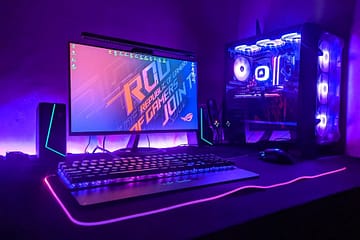Interactive whiteboard technology has revolutionized the way teachers engage with their students in the classroom. These innovative tools offer a wide range of benefits that enhance the learning experience for both educators and students. One of the key advantages of interactive whiteboard technology is its ability to make lessons more dynamic and engaging. By incorporating multimedia elements such as videos, images, and interactive software, teachers can capture students’ attention and create a more immersive learning environment. This can help to improve student motivation and interest in the subject matter, leading to better retention of information.
Another benefit of interactive whiteboard technology is its ability to cater to different learning styles. With the use of visual aids, audio clips, and interactive activities, teachers can accommodate the diverse needs of their students and create a more inclusive learning environment. Additionally, interactive whiteboards allow for greater flexibility in lesson delivery, as teachers can easily adapt their presentations to suit the needs of individual students or the class as a whole. This can help to promote a more personalized approach to learning and ensure that all students have the opportunity to succeed.
How to Incorporate Interactive Whiteboard Tablets into Your Lesson Plans
Incorporating interactive whiteboard tablets into lesson plans can be a game-changer for educators looking to enhance their teaching methods. One effective way to integrate these tools into lesson plans is by using them to create interactive presentations that encourage student participation. By incorporating quizzes, polls, and interactive games, teachers can make their lessons more engaging and encourage active learning. Additionally, interactive whiteboard tablets can be used to facilitate collaborative learning experiences, allowing students to work together on projects and share their ideas in real-time.
Another way to incorporate interactive whiteboard tablets into lesson plans is by using them to create multimedia-rich content that caters to different learning styles. Teachers can use these tools to present information in a variety of formats, such as videos, audio clips, and interactive diagrams, which can help to accommodate the diverse needs of their students. Furthermore, interactive whiteboard tablets can be used to create interactive exercises and activities that allow students to practice and apply their knowledge in a hands-on manner. This can help to reinforce learning and improve retention of information.
Engaging Students with Interactive Activities and Games
Interactive whiteboard tablets offer a wide range of opportunities for engaging students with interactive activities and games. One effective way to use these tools is by incorporating interactive quizzes and polls into lessons, which can help to gauge student understanding and encourage active participation. Additionally, teachers can use interactive whiteboard tablets to create educational games that make learning more fun and engaging for students. By incorporating elements such as gamification, rewards, and competition, educators can motivate students to actively participate in their lessons and improve their retention of information.
Another way to engage students with interactive activities and games is by using interactive whiteboard tablets to facilitate collaborative learning experiences. These tools allow students to work together on projects, solve problems, and share their ideas in real-time, which can help to promote teamwork and critical thinking skills. Furthermore, interactive whiteboard tablets can be used to create interactive exercises that allow students to practice and apply their knowledge in a hands-on manner. This can help to reinforce learning and improve student retention of information.
Enhancing Student Participation and Collaboration with Interactive Whiteboard Tablets
Interactive whiteboard tablets offer a wide range of opportunities for enhancing student participation and collaboration in the classroom. One effective way to use these tools is by incorporating them into group activities and projects, which can help to promote teamwork and critical thinking skills. By allowing students to work together on interactive exercises and share their ideas in real-time, educators can create a more collaborative learning environment that encourages active participation.
Another way to enhance student participation and collaboration with interactive whiteboard tablets is by using them to facilitate peer-to-peer learning experiences. These tools allow students to share their work with their peers, receive feedback, and collaborate on projects in real-time, which can help to promote a more inclusive learning environment. Additionally, interactive whiteboard tablets can be used to create interactive exercises that encourage students to work together on problem-solving tasks, which can help to improve their teamwork skills and critical thinking abilities.
Tailoring Lessons to Different Learning Styles with Interactive Whiteboard Technology
Interactive whiteboard technology offers educators the opportunity to tailor their lessons to different learning styles in order to accommodate the diverse needs of their students. One effective way to do this is by using these tools to present information in a variety of formats, such as videos, audio clips, and interactive diagrams. By incorporating multimedia-rich content into their lessons, teachers can cater to the visual, auditory, and kinesthetic learning styles of their students, which can help to improve engagement and retention of information.
Another way to tailor lessons to different learning styles with interactive whiteboard technology is by using these tools to create personalized learning experiences for individual students. Educators can use interactive whiteboard tablets to adapt their presentations to suit the needs of specific students, providing additional support or challenges as needed. Additionally, these tools can be used to create interactive exercises that allow students to practice and apply their knowledge in a hands-on manner, which can help to reinforce learning and improve retention of information.
The Impact of Interactive Whiteboard Tablets on Student Learning and Retention
The impact of interactive whiteboard tablets on student learning and retention is significant, as these tools offer a wide range of benefits that enhance the educational experience for students. One key impact of interactive whiteboard tablets is their ability to make lessons more dynamic and engaging, which can help to improve student motivation and interest in the subject matter. By incorporating multimedia elements such as videos, images, and interactive software, educators can capture students’ attention and create a more immersive learning environment that promotes better retention of information.
Another impact of interactive whiteboard tablets on student learning and retention is their ability to cater to different learning styles. These tools allow educators to present information in a variety of formats, such as videos, audio clips, and interactive diagrams, which can help to accommodate the diverse needs of their students. Additionally, interactive whiteboard tablets allow for greater flexibility in lesson delivery, as teachers can easily adapt their presentations to suit the needs of individual students or the class as a whole. This personalized approach to learning can help to ensure that all students have the opportunity to succeed and improve their retention of information.
Tips for Maximizing the Potential of Interactive Whiteboard Tablets in the Classroom
Maximizing the potential of interactive whiteboard tablets in the classroom requires careful planning and consideration of how these tools can best be used to enhance the educational experience for students. One key tip for educators looking to maximize the potential of interactive whiteboard tablets is to incorporate them into lesson plans in a way that encourages active participation and engagement from students. By using these tools to create interactive presentations, quizzes, polls, and games, teachers can make their lessons more dynamic and engaging, which can help to improve student motivation and interest in the subject matter.
Another tip for maximizing the potential of interactive whiteboard tablets in the classroom is to use them as a tool for facilitating collaborative learning experiences. These tools allow students to work together on projects, solve problems, and share their ideas in real-time, which can help to promote teamwork and critical thinking skills. Additionally, educators should consider tailoring their lessons to different learning styles by using interactive whiteboard tablets to present information in a variety of formats that cater to the visual, auditory, and kinesthetic needs of their students. By doing so, teachers can create a more inclusive learning environment that accommodates the diverse needs of all students.
In conclusion, interactive whiteboard technology offers a wide range of benefits that enhance the educational experience for both educators and students. By incorporating these tools into lesson plans in a way that encourages active participation and engagement from students, teachers can make their lessons more dynamic and engaging while promoting better retention of information. Additionally, educators should consider tailoring their lessons to different learning styles by using interactive whiteboard tablets to present information in a variety of formats that cater to the diverse needs of their students. By doing so, teachers can create a more inclusive learning environment that accommodates the diverse needs of all students while promoting teamwork and critical thinking skills through collaborative learning experiences. With careful planning and consideration of how these tools can best be used in the classroom setting, educators can maximize the potential of interactive whiteboard tablets and create a more immersive learning environment that promotes student success.


